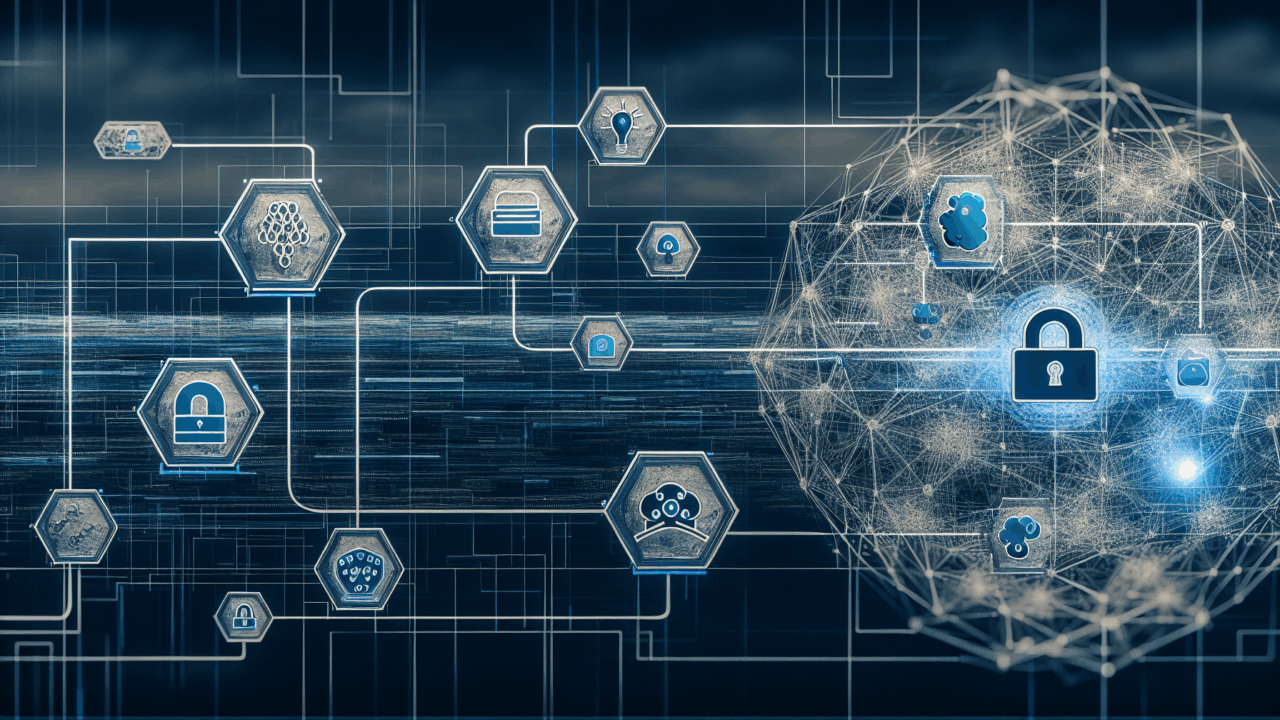The rapid integration of Gen-AI within enterprises is revolutionizing the technology landscape. However, with great progress comes increased risk to the AI supply chain that requires robust defense strategies.
Understanding the AI-Driven Supply Chain
The AI-driven supply chain is comprised of several interrelated components.
- Data Collection: Vast amounts of data are gathered from various sources including sensors, transactions, and market trends.
- Data Analysis: AI algorithms interpret this data to identify patterns, predict demand, and optimize routes and inventory levels.
- Autonomous Operations: AI enables automated warehouse management and self-coordinating logistics.
- Supplier Relationship Management: AI tools provide insights into supplier performance, risk, and facilitate smart contracts.
Integration of AI into enterprise systems offers substantial benefits such as enhanced efficiency, cost reduction, and demand responsiveness. However, it introduces vulnerabilities like reliance on data integrity and potential biases in decision-making algorithms. Cybersecurity becomes paramount to protect these AI systems from manipulation and to ensure the authenticity of the data on which they rely.
Assessing Risks in AI Adoption
- Organizations face unique risks when incorporating Generative AI (Gen-AI) and Large Language Models (LLMs) into their systems. An evident challenge is the potential for data poisoning, where these models, trained on vast datasets, can easily ingest malicious data, skewing outcomes and enabling cybersecurity breaches.
- Evaluating these risks necessitates a robust security risk assessment framework tailored for AI systems, distinguishing between traditional IT vulnerabilities and AI-specific threats such as model inversion attacks, adversarial examples, and unfair bias propagation.
- To mitigate risks, enterprises should consider multi-layered defense strategies including anomaly detection, input validation, and secure model training protocols that involve data encryption and access controls to safeguard against unauthorized model exploitation.
- Identify Critical AI Components: Catalog and prioritize AI systems based on their criticality and the data they process. Develop protocols to protect these assets with stringent security controls.
- Employ Layered Defense Mechanisms: Implement a multi-layered security approach that includes encryption, access controls, and anomaly detection to safeguard AI applications against diverse threats.
- Continuous Monitoring: Establish systems for the constant surveillance of AI operations to swiftly identify and address irregular activities or breaches.
- Agile Security Posture: Adopt an agile methodology that allows for quick adaptation of security protocols in response to evolving threats and AI advancements.
- Regular Security Audits: Perform routine audits and penetration tests to evaluate the effectiveness of the AI security protocols and ensure compliance with industry standards.
- Incident Response Planning: Develop and routinely update incident response plans to minimize the impact of potential security incidents involving AI systems.
- Staff Training and Awareness: Ensure that all personnel are trained on AI security risks and their roles in maintaining enterprise security.
- The adoption of predictive analytics in AI defense strategies has become essential for the proactive identification of potential supply chain vulnerabilities. By analyzing historical data, enterprises can anticipate and mitigate risks before they manifest into actual threats.
- The concept of adaptive security architectures is gaining traction, where AI systems dynamically adjust their defense mechanisms in real-time based on detected activity, ensuring a constantly evolving security posture.
- Enterprises are recognizing the need for specialized AI security talent, fostering a new generation of cybersecurity professionals skilled in machine learning and artificial intelligence to design and implement advanced defense strategies.
- The focus is shifting towards the development of multi-layered defense strategies, integrating AI at various levels like endpoint security, network monitoring, and behavioral analytics to provide comprehensive protection against complex threat vectors.
- Regulatory bodies and industry groups are collaborating to establish standardized security frameworks for AI, aiming to create a set of best practices and benchmarks that guide enterprises in deploying secure AI solutions.
Conclusions
Embracing AI within enterprises necessitates a proactive approach to security. Implementing comprehensive strategies, continual education, and innovative tools will be the cornerstone of safeguarding the modern AI-driven environment.
Source: https://thehackernews.com/2025/09/evolving-enterprise-defense-to-secure.html
